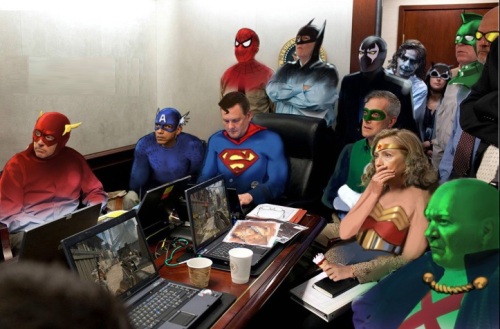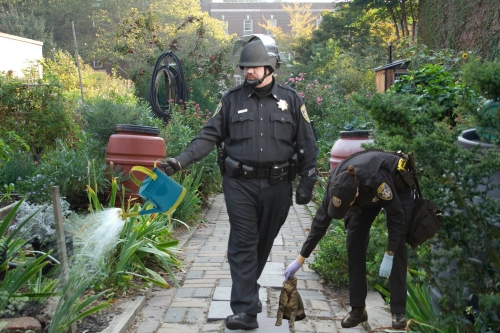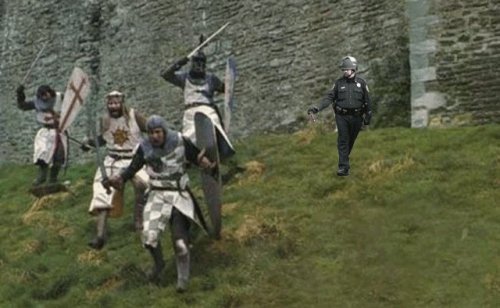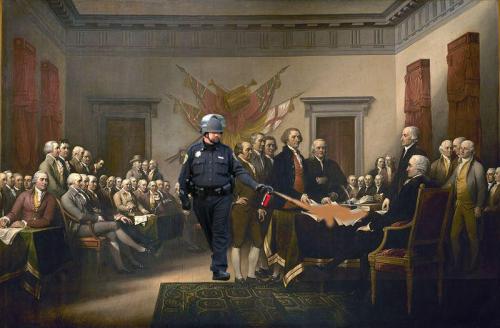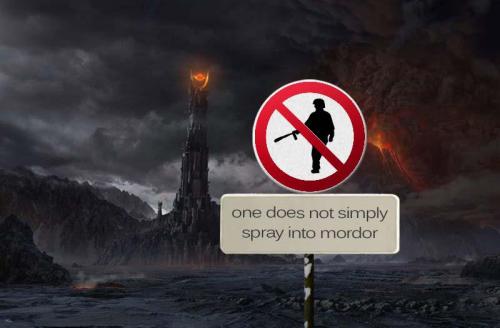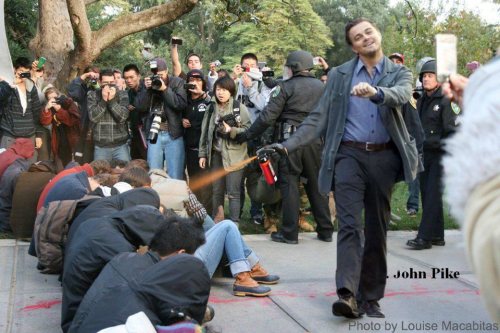(image, by UCLDH, licensed under a Creative Commons Attribution 2.0 Generic [CC BY 2.0] license)
Category: Things
What are these Technological Things?
Over at in media res, what promises to be a great theme week has just gotten underway on the topic/question, “What are these Technological Things?”
Here is the complete schedule:
Monday, January 16, 2012 – Kristopher L. Cannon (Georgia State University) presents: Technological#Failure
Tuesday, January 17, 2012 – Kris Coffield (University of Hawaii) presents: Can the Sub-Object Speak?: Siri and the commodification of things
Wednesday, January 18, 2012 – Ravindra N. Mohabeer (Vancouver Island University) presents: Believing is Seeing: Is technology the material of futures?
Thursday, January 19, 2012 – Paul Boshears (European Graduate School) presents: Machine Love: the companionship of technology
Friday, January 20, 2012 – Benjamin Thevenin (University of Colorado, Boulder) presents: Thing Power: recognizing our reflections (or not) in our tablets
Theme week organized by Kristopher L. Cannon (Georgia State University).
Image from Tech Cocktail via Flickr. Used and altered under Creative Commons License permission.
Gaming & Art
[youtube http://www.youtube.com/watch?v=ZkkJaqBbXV8]
Cory Arcangel, Super Mario Clouds (2002)
[youtube http://www.youtube.com/watch?v=yAhG0PJBQAA]
Anne-Marie Schleiner, Joan Leandre, Brody Condon, Velvet Strike (2002)
[youtube http://www.youtube.com/watch?v=8f5O5Yw9gr8]
Brody Condon, Adam Killer (1999-2001)
[youtube http://www.youtube.com/watch?v=HdAJKRpP5uU]
Cory Arcangel, Super Mario Movie (2005), part 1
[youtube http://www.youtube.com/watch?v=mAsb6LMjIrM]
Cory Arcangel, Super Mario Movie (2005), part 2
[youtube http://www.youtube.com/watch?v=C27OiaA_i14]
Cory Arcangel, Naptime (2002)
[youtube http://www.youtube.com/watch?v=rjg228x71w4]
Cory Arcangel, I Shot Andy Warhol (2002)
[youtube http://www.youtube.com/watch?v=Xs09qMExDa8]
Moose13088 (?), I Shot Cory Arcangel (2009)
[youtube http://www.youtube.com/watch?v=baIiP8re1y4]
Cory Arcangel, Beat the Champ (2011)
[youtube http://www.youtube.com/watch?v=N5UGN7tq1lQ]
Cory Arcangel, Pro Tools: Various Self-Playing Bowling Games (2011)
Niklas Luhmann’s Theory of Memes
Over at her blog Judgmental Observer, Amanda Ann Klein has a great post up about Internet memes, their workings, and their humor. In addition to the central themes of “cruelty” and “self-loathing” that she sees at work, Klein points to two formal aspects of successful memes: “recognizability” and “repetition.”
This reminded me of Niklas Luhmann’s theory of media, itself a sort of “remediation” of psychologist Fritz Heider’s distinction of medium vs. thing, which comes down to a distinction between a “loose coupling” and a “tight coupling” of elements of a given sort (see Heider’s Ding und Medium). For Luhmann, mediality consists in the relation between a loosely coupled “medial substrate” and the tightly coupled “forms” that it is capable of assuming — or, in other words, in the “operative deployment of the difference of medial substrate and form” (Luhmann, Die Gesellschaft der Gesellschaft 195; my translation), which is itself relative to an observer or system.
(For more on Luhmann’s theory of media, see Chapter 3 (165-214) of Luhmann, Die Kunst der Gesellschaft (translated as Art as a Social System). See also Chapter 2 (190-412) of Luhmann, Die Gesellschaft der Gesellschaft.)
The connection with Klein’s notions of “recognizability” and “repetition” as formal elements of memification comes when Luhmann, on one occasion, notes that one way to elaborate his distinction of medial substrate and form is “by means of the distinction between redundancy and variety” (Art as a Social System 105). He explains:
The elements that form the medium through their loose coupling—such as letters in a certain kind of writing or words in a text—must be easily recognizable. They carry little information themselves, since the informational content of an artwork must be generated in the course of its formation. The formation of the work creates surprise and assures variety, because there are many ways in which the work can take shape and because, when observed slowly, the work invites the viewer to contemplate alternate possibilities and to experiment with formal variations. (105)
“Variety through repetition” is the formal basis of the Internet meme, as well as being a principle of seriality and a formal description of mediality itself (following Luhmann). As I recently argued for Lady Gaga, Nyan Cat can also be dubbed a “serial media remix”: Nyan Cat is the instantly recognizable, iconically redundant substrate out of which ever new forms are produced; these forms become available, in turn, for sampling, and they serve as the substrate of a higher-order mediality, thus proliferating in a (non-linear) serial explosion.
Long live Nyan Cat: memifier of Internets, proliferator of serial forms, and media remixer extraordinaire! All your substrate are belong to us!!!11!
Who’s Really Running Things…
How did I miss this? Anyway, now that I’ve discovered this ingenious reworking of the photo taken May 1, 2011, as news of Osama bin Laden’s death came to the White House situation room, I thought I’d put it up here to continue the blog’s occasional focus on the points of contact between Photoshop, superheroes, and politics (and video games: look at their computer screens!).
Nightmare Before Christmas
[youtube http://www.youtube.com/watch?v=5gUKvmOEGCU]
On Wednesday, December 21, 2011 (6pm, room 609 in the Conti-Hochhaus), the Film & TV Reading Group will meet to discuss Steven Shaviro’s “Contagious Allegories: George Romero,” a chapter from his now classic book The Cinematic Body. In the spirit of the holiday season, though, and in light of the fitting subject matter, we’ve decided to make it into a somewhat more festive event than usual: we’ll start off by screening the first of Romero’s zombie movies, Night of the Living Dead (1968). Glühwein and zombies: it just doesn’t get much more Christmas-y than that!
Picking Up the Pieces — #OWS
[youtube http://www.youtube.com/watch?v=T_Jz408w3W0&w=560&h=315]
Photoshop and the Phenomenology of Violence
With the continued proliferation of the Casual Pepper Spray Cop meme, which I posted on a few days back, we’ve seen Lt. Pike placed in the most far-flung fictional and real-world situations, from historical civil rights marches to the halls of Hogwarts, from the Death Star to Nazi Germany. In these images, he reaches new levels of cruelty, horror, (ambivalent) humor, sheer absurdity, and grotesqueness as he sprays his pepper spray in the eyes of men, women, monsters, cartoon characters, animals, and children. Among these, however, it is the above image which, for me, remains unsurpassed in its ability to reveal the deep, embodied reality of the officer’s brutality. With his pepper-spray canister replaced by a watering can, his posture — his total body comportment in relation to the world — is revealed to be perfectly consonant with the activity of watering flowers (rather than pepper-spraying peaceful protestors). He is relaxed, almost meditative, at peace with the world around him, in a Zen-like symbiotic harmony (wu wei) with the environment. This, I suggest, is the ultimate indictment of his violent act.
And now for something completely different…
There’s nothing really funny about any of this, of course, but there are some ingenious (and in some cases quite disturbing) images over at Occupy Lulz (via BoingBoing) that — as with these images exploiting and propagating the immediate iconicity of UC Davis Police Lt. John Pike — testify to the central role of imaging technologies and social media in the phenomenon that is #Occupy.
Global Gaga
[youtube http://www.youtube.com/watch?v=IF5WYaoWXI4]
As I’m preparing a talk on Lady Gaga for the upcoming conference “Cultural Distinctions Remediated: Beyond the High, the Low, and the Middle” (to be held here in Hannover December 15-17, 2011), Ruth Mayer just sent me a link to the video above. Wow! What else can you say about that? (Especially if, like me, you don’t understand even a fraction of what’s going on there?) Judging from the looks of it, this certainly seems to be one remediation that’s “beyond the high, the low, and the middle” – where exactly is it, though, and who’s that woman at 3:15-3:20? (By the way, if anyone’s looking for X-mas present ideas, I’ll take one of those cool t-shirts with her face on it being peddled via the youtube video description):


